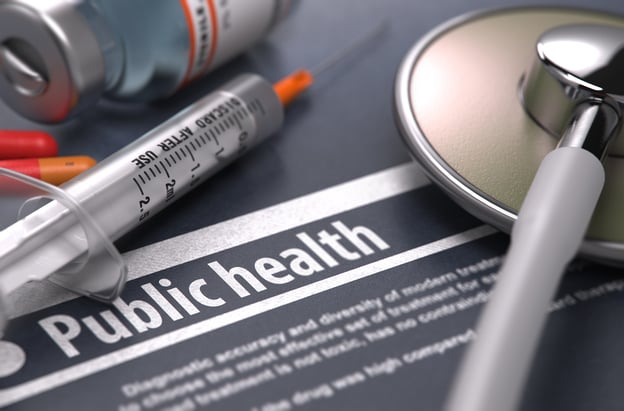Medical device essential requirements – understanding the basics

Essential requirements are a common feature of medical device regulations around the world. At the most basic level, they are a series of criteria designed to ensure the safety and performance of medical devices. Manufacturers are required to check their devices against each requirement and produce documentation demonstrating conformity with them. This documentation must then be submitted for review as part of the device conformity assessment process. In this manner, compliance with the essential requirements is a fundamental legal obligation for manufacturers of medical devices.
The following jurisdictions, in particular, incorporate essential requirements into their medical device regulatory frameworks:
- The EU – the 'General Safety and Performance Requirements' (Annex I of the Medical Device Regulation)
- Great Britain – the 'Essential Requirements' (Annex I of the Medical Device Directive)
- Australia – the 'Essential Principles' (Schedule I of the Therapeutic Goods (Medical Device) Regulations)
Differing terminology aside, the essential requirements in these jurisdictions are broadly similar and contain many overlapping provisions. From a high-level perspective, they each cover three core areas, namely – 1) the general safety and performance of devices; 2) device design and manufacture; and 3) information to be supplied with devices.
In this article we discuss manufacturer obligations under the essential requirements in these jurisdictions, as well as the different methods for demonstrating compliance with them.
Summary of requirements
Part 1 (the general requirements) sets out a series of high level obligations which apply in relation to all devices. In essence, devices must remain safe throughout their lifetime and shall perform as intended by the manufacturer. This is to be achieved through the adoption of risk control measures and compliance with safety principles. Any risks that are not eliminated must be deemed acceptable when weighed against the benefit to the patient.
Part 2 (the design and manufacture requirements) forms the bulk of the essential requirements. The obligations set out in this section generally relate to the mitigation of specific risks which may or may not be relevant depending on the characteristics of the device (e.g. whether it is sterile, involves electrical parts, has a measuring function, etc.).
Part 3 (the information requirements) sets out requirements relating to the information manufacturers must provide alongside their devices. In particular, it lists the minimum content that must be included in the device’s labelling and instructions for use.
How to demonstrate compliance
Evidence of conformity with the essential requirements should be included in the device technical file. The purpose of this file is to provide sufficient information allowing conformity assessment bodies to establish whether or not the relevant legal obligations have been complied with. So, for example, a manufacturer claiming that their device detects and diagnoses skin cancer would need to submit proof (such as clinical test results) demonstrating that their device does indeed perform as claimed. Other information relevant to the technical file includes the results of any risk analysis and clinical investigations, as well as copies of the device label, packaging and instructions for use.
Another common method for demonstrating conformity with the essential requirements is the use of standards. Standards provide rules and guidelines which may be implemented by manufacturers to help ensure compliance with the medical device regulations. As it relates to the essential requirements, ISO 14971 (on risk management) is a useful means for manufacturers to demonstrate that they have a system in place for identifying, evaluating and controlling any risks associated with their device. Other standards may also be relevant depending on specific device features and functionality, such as ISO 11135 (on sterilisation using ethylene oxide), ISO 22442 (on the use of animal tissues) and IEC 62304 (on software).
In the EU and UK, certain standards have even been elevated to carry a presumption of conformity in relation to the medical device regulations (these are known as ‘harmonised’ standards in the EU and ‘designated’ standards in the UK). Any manufacturer who can demonstrate that they have applied a harmonised/designated standard will be assumed to have complied with the relevant sections of the essential requirements to which the standard relates. The UK government maintains a consolidated list of over 250 standards which have been designated for the purpose of the UK medical device regulations. The European Commission has also published a summary list of its harmonised standards; however, this list is currently incomplete and is in the process of being updated following the implementation of the EU’s new medical device regulations.
How we can help
Unsurprisingly, compliance with the medical device essential requirements is only necessary for products which are in fact medical devices. Determining whether or not a product qualifies as a medical device should be done in the early stages of development to allow for appropriate regulatory strategy planning. However, this is not always a straightforward assessment and can be complicated by the volume of legal rules and supporting guidance that must be considered in each jurisdiction.
Regtik, our healthcare regulatory explorer tool, can help you navigate this regulatory maze by walking your product through a series of simple questions designed to determine its qualification (and classification) status. If it is established that your product is a medical device, the tool will then provide a range of resources to support your regulatory compliance journey. This includes an essential requirements checklist, as well as information on which standards can be used to demonstrate compliance with each requirement.
If you are interested in learning more about Regtik or would like to request a demo, please contact any member of our team or register your interest below.




